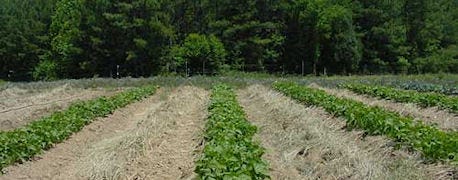
Stories about interseeding soybeans into standing wheat date back into the 1980's. In southern Indiana a farmer here and there tried to get a jump on the doublecrop season by planting early. Some went to narrow row tires to pull the drill though the wheat.
In northern Indiana it was the only way guys figured they could get a chance at growing a second crop behind wheat. If they waited for the wheat to mature and come off, the calendar was late enough that they risked frost to soybeans even if they matured, which would result in dockage and lost yield.

Interseeding Soybeans Into Wheat Still Happens In N. Indiana
You probably haven't seen a story about interseeding soybeans into wheat for quite a while. It's kind of like planting soybeans in March in typical years, not 2012. Some people do it successfully almost every year. Their neighbors shake their heads, but they continue to pull off good yields, often saying its their best beans, not necessarily because early planting yields more, but because something happens to delay planting of the second crop.
It turns out interseeding soybeans into wheat is much the same way. Neighbors may not be impressed, but if it works, it works. Gene Schmidt, Hanna, has found it works for him in their climate affected by Lake Michigan. He plants wheat in 15-inch rows, then interseeds so he can get the soybeans off to a faster start until waiting until the wheat is combined and then planting soybeans. He has done it for several years now, and finds that it is an important part of his rotation. He also grows a large amount of seed corn, since much of his land is under irrigation. Part of it is sandy, although not all of it is well-drained sand. He actually has some sand that has drainage problems in wet years.
Interseeding soybeans into wheat is a way for him to get two paychecks off in the same field in the same year. He says he couldn't do it if he tried to doublecrop in the traditional way, waiting for the first harvest before planting the second crop.
About the Author(s)
You May Also Like




